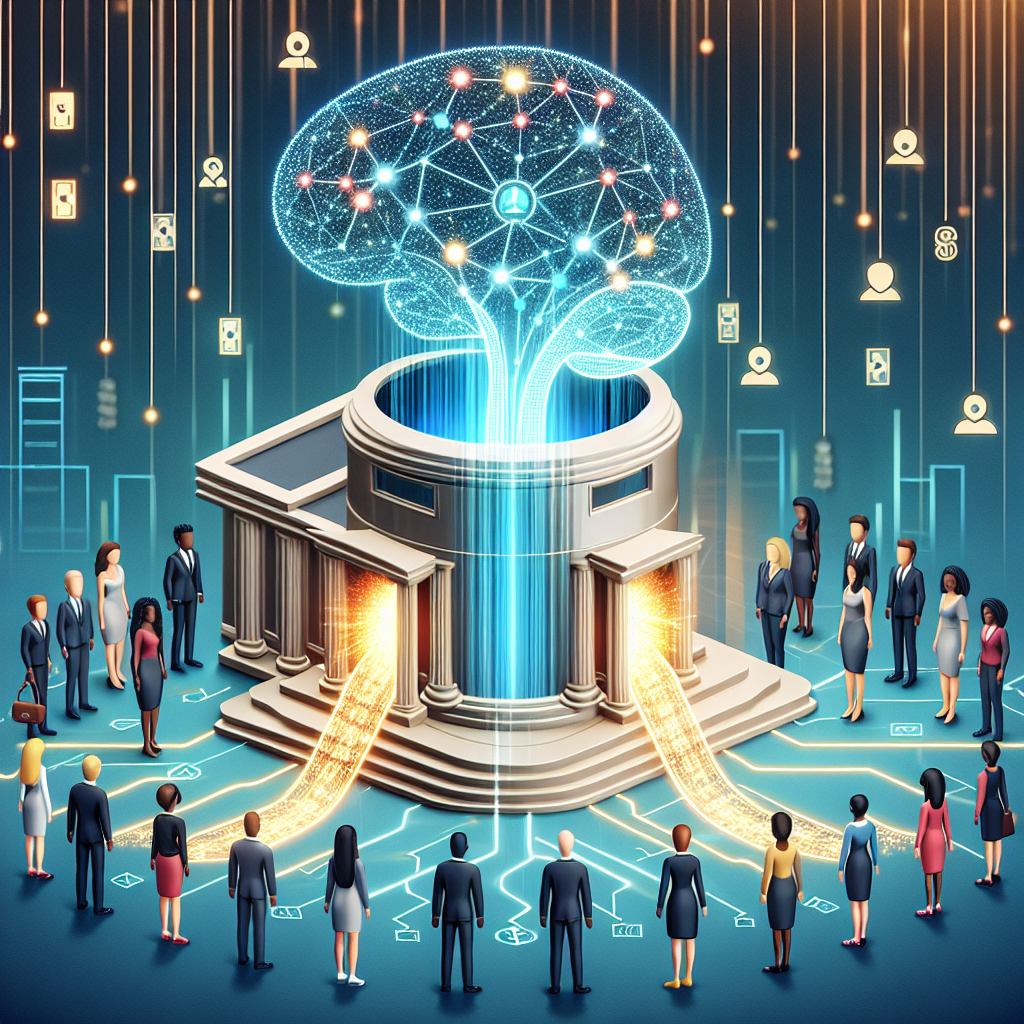Artificial intelligence (AI) has transformed the way businesses operate, including the banking sector. With the rise of digital banking and the increasing demand for personalized customer experiences, AI has become a crucial tool for marketing and customer acquisition in the banking industry. In this article, we will explore the impact of AI on marketing and customer acquisition in banking, and how it is revolutionizing the way banks engage with their customers.
Impact of AI on Marketing in Banking:
1. Personalized Marketing: AI allows banks to gather and analyze large amounts of customer data to create personalized marketing campaigns. By understanding customers’ preferences, behaviors, and needs, banks can tailor their marketing messages to individual customers, increasing the chances of converting leads into loyal customers.
2. Predictive Analytics: AI-powered predictive analytics enables banks to forecast customer behavior and trends, allowing them to make informed marketing decisions. By analyzing historical data and patterns, banks can identify potential customers and target them with relevant offers and promotions.
3. Chatbots and Virtual Assistants: AI-powered chatbots and virtual assistants have become popular tools for customer engagement in the banking industry. These tools can provide personalized assistance to customers, answer their queries, and guide them through the banking process, improving customer satisfaction and retention.
4. Customer Segmentation: AI helps banks segment their customers based on various factors such as demographics, behavior, and preferences. By understanding different customer segments, banks can create targeted marketing campaigns that resonate with each group, leading to higher conversion rates and customer loyalty.
5. Fraud Detection: AI algorithms can detect fraudulent activities in real-time, helping banks prevent financial losses and protect their customers’ sensitive information. By analyzing transaction data and patterns, AI can flag suspicious activities and alert banks to take immediate action, reducing the risk of fraud.
Impact of AI on Customer Acquisition in Banking:
1. Lead Scoring: AI-powered lead scoring models help banks identify high-quality leads and prioritize them for follow-up. By analyzing customer data and interactions, AI can determine the likelihood of a lead converting into a customer, enabling banks to focus their resources on the most promising prospects.
2. Automated Customer Onboarding: AI streamlines the customer onboarding process by automating document verification, identity verification, and account setup. By leveraging AI technologies such as optical character recognition (OCR) and biometric authentication, banks can onboard new customers quickly and securely, reducing friction and improving the overall customer experience.
3. Cross-Selling and Upselling: AI enables banks to cross-sell and upsell products and services to existing customers based on their behavior and transaction history. By analyzing customer data, AI can recommend relevant products and personalized offers to customers, increasing the chances of upselling and cross-selling, and boosting revenue for banks.
4. Personalized Recommendations: AI-powered recommendation engines help banks offer personalized product recommendations to customers based on their preferences and past interactions. By leveraging machine learning algorithms, banks can suggest relevant products and services to customers, enhancing their shopping experience and driving customer acquisition.
5. Retargeting Campaigns: AI enables banks to retarget potential customers who have shown interest in their products or services but have not completed a transaction. By analyzing customer behavior and preferences, AI can create personalized retargeting campaigns to re-engage these customers and encourage them to convert, increasing customer acquisition rates.
FAQs:
Q: How does AI improve customer engagement in banking?
A: AI enhances customer engagement in banking by providing personalized marketing messages, predictive analytics, chatbots, virtual assistants, and customer segmentation. These tools help banks understand their customers better, address their needs, and provide a seamless and personalized experience.
Q: How does AI help banks prevent fraud?
A: AI algorithms analyze transaction data and patterns in real-time to detect fraudulent activities such as unauthorized transactions, account takeovers, and identity theft. By flagging suspicious activities and alerting banks, AI helps prevent financial losses and protect customers’ sensitive information.
Q: How does AI streamline the customer onboarding process in banking?
A: AI automates document verification, identity verification, and account setup processes, enabling banks to onboard new customers quickly and securely. By leveraging technologies such as OCR and biometric authentication, AI reduces friction in the onboarding process and improves the overall customer experience.
Q: How does AI enable banks to cross-sell and upsell products and services?
A: AI analyzes customer data and interactions to identify cross-selling and upselling opportunities. By recommending relevant products and personalized offers to customers, AI helps banks increase revenue and drive customer acquisition.
Q: How does AI help banks create personalized recommendations for customers?
A: AI-powered recommendation engines analyze customer preferences and past interactions to offer personalized product recommendations. By leveraging machine learning algorithms, banks can suggest relevant products and services to customers, enhancing their shopping experience and driving customer acquisition.
In conclusion, AI has significantly impacted marketing and customer acquisition in the banking industry by enabling personalized marketing, predictive analytics, chatbots, virtual assistants, customer segmentation, lead scoring, automated customer onboarding, cross-selling, upselling, personalized recommendations, and retargeting campaigns. By leveraging AI technologies, banks can enhance customer engagement, prevent fraud, streamline the onboarding process, increase revenue, and drive customer acquisition. As AI continues to evolve, banks must embrace these technologies to stay competitive in the digital era and deliver exceptional customer experiences.

